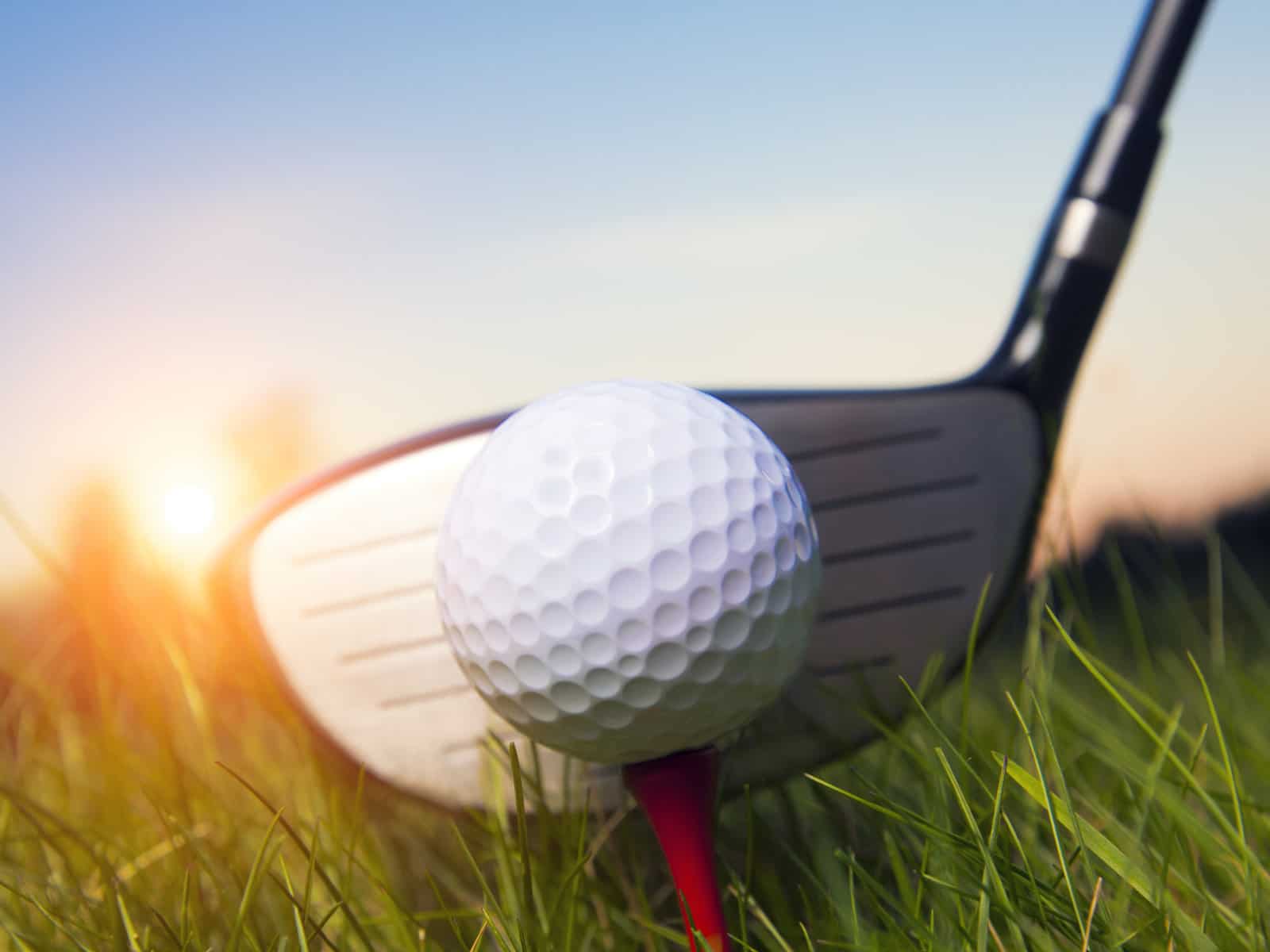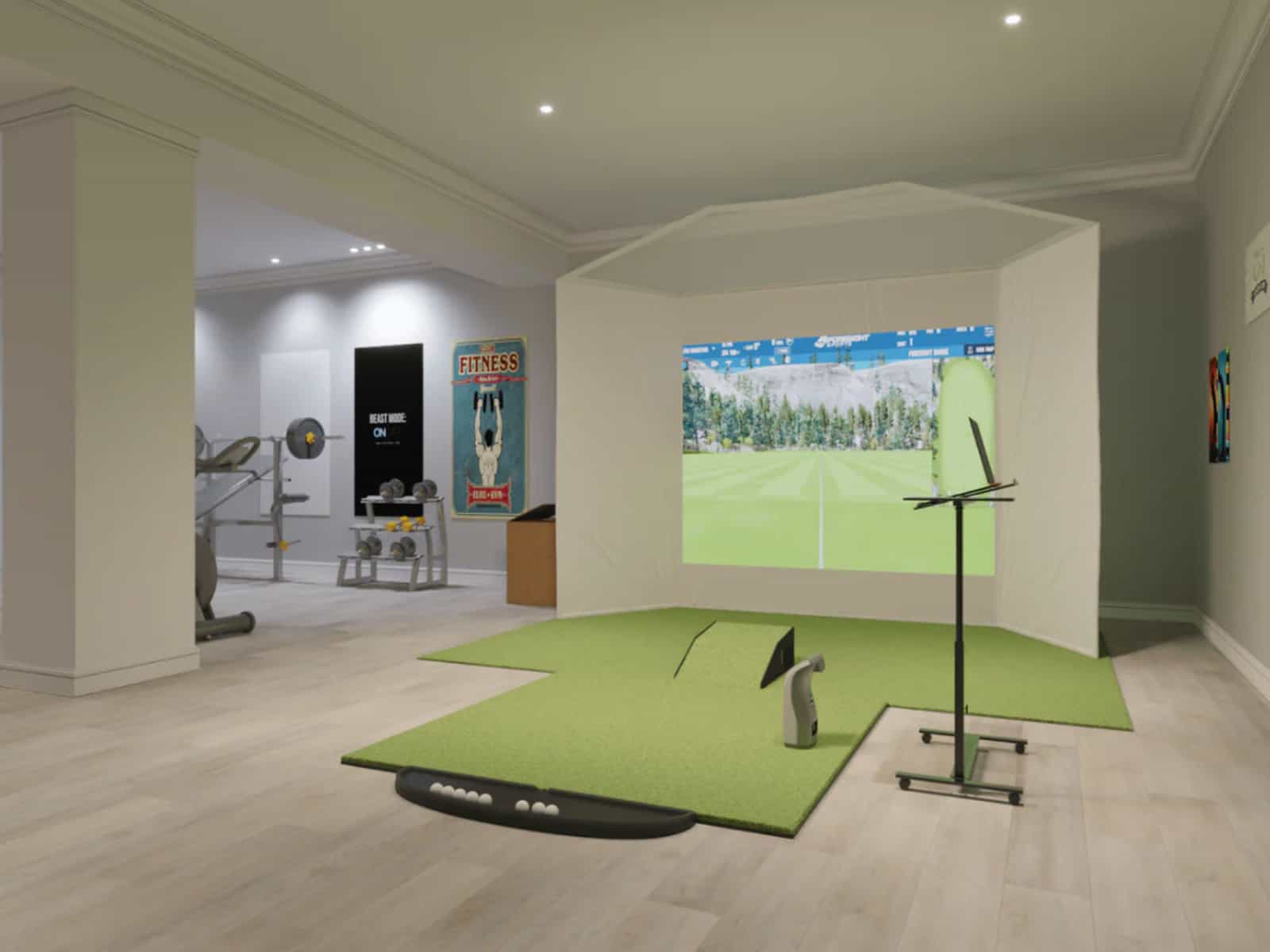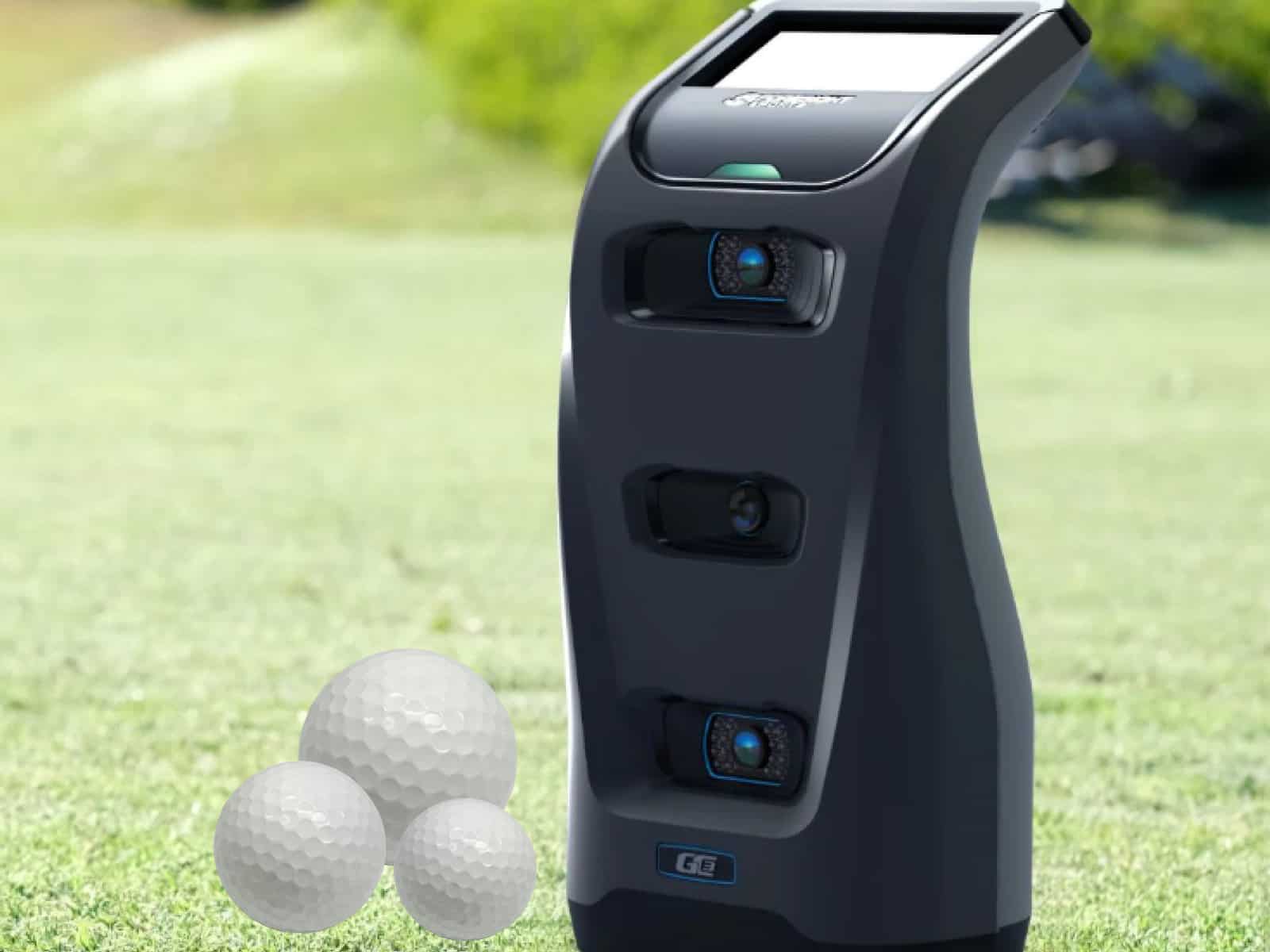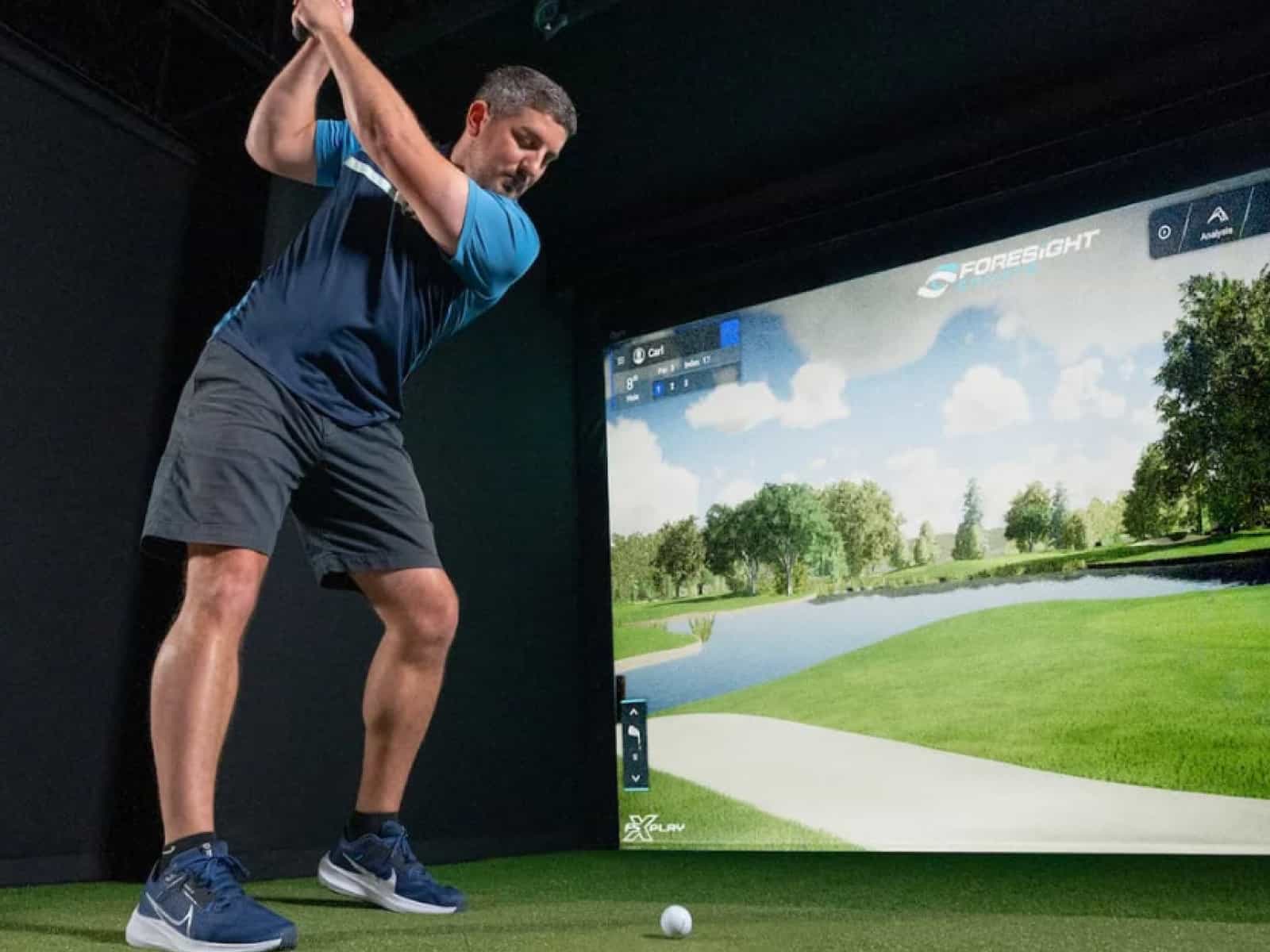Many amateur golfers focus too much on refining their swings and forget that effective energy transfer, or “smash factor,” can add yards to tee shots. Measured on a scale from 1 to 2, with 1 representing a poor strike and 1.5 an elite strike, smash factor is key to distance yet often overlooked.
This article explores smash factor, a stat that illuminates the kinetic chain connecting backswing, torso rotation, and ball strike. Quantifying energy transfer efficiency can empower you to self-diagnose issues sapping clubhead speed.
We will also define optimal smash factor ranges for drivers and irons and provide actionable tips to add yards by improving weight shift, angle of attack, strike location, and equipment fitting.
What is Smash Factor? & How Is It Calculated?
Smash factor refers to the efficiency of energy transfer from the golf club to the golf ball at impact. It is a measure of how effectively a player can translate the speed of their golf swing into ball velocity.
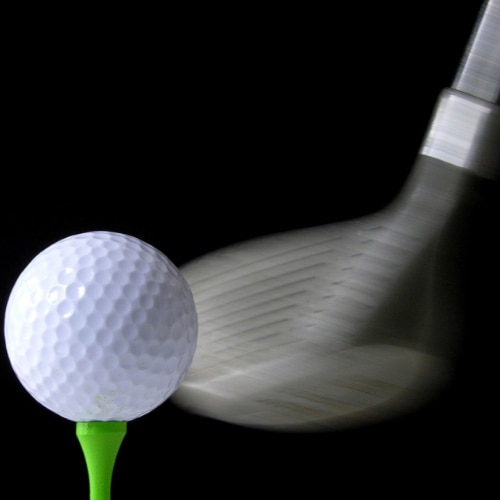
Specifically, smash factor compares the clubhead speed right before striking the ball to the velocity of the ball immediately after impact. It is calculated by dividing the ball velocity by the clubhead velocity. For example, if the club head is traveling at 100 mph at impact and the ball leaves the face going 150 mph, the smash factor would be 1.5 (150/100 = 1.5).
The higher the smash factor, the more ball speed is retained relative to swing speed for any given shot. This indicates more efficient collision dynamics and energy transfer to the ball. The theoretical maximum smash factor is around 1.5 based on material properties and golf equipment regulations. Most elite players are able to achieve smash factors between 1.4 and 1.5, indicating high efficiency in converting swing speed into ball speed.
What Elements Impact Smash Factor?
There are several key factors that influence smash factor in the golf swing; here are some examples:
Clubhead Design
The design of the club, and specifically the head, greatly impacts smash factor. Some design elements include:
- Size – Larger clubhead designs generally have higher MOI (moment of inertia) levels, making it easier to deliver maximum ball speed on mishits away from the center of the face. Oversize drivers optimize smash factor.
- Weight – Counterbalancing weight savings in the grip end of clubs can impact smash factor. Proper weighting that matches the golfer’s swing tempo is ideal.
- Center of gravity – CG placement, both vertically and horizontally in clubheads contributes to producing better launch conditions and spin rates for optimal distance and accuracy.
- Flex – The right shaft stiffness profile allows the clubhead to be delivered back to the ball as efficiently as possible. Too much or too little flex reduces overall energy transfer.
Strike Location

Hitting the sweet spot (the area of the club face the ball must hit for optimal results) maximizes ball speed and smash factor. Contact away from the center reduces efficiency due to the gear effect (hitting off-center changes ball flight) and loss of ball speed. This is where understanding how slices and hooks occur and how to prevent them becomes crucial. Hooks and slices can be detected with the help of golf simulators as explained in this article.
Attack Angle
Matching the ideal angle of approach for the driver vs. irons enables maximal compression on the ball at impact for the best energy transfer depending on the desired shot shape. A downward attack angle into the ball is preferred to achieve a higher smash factor..
Swing Metrics
Other swing data points are closely related to and affect smash factor:
Clubhead speed influences the starting velocity component that smash factor compares to the final ball speed. Faster swing speeds allow more potential energy to be imparted to the ball.
Swing path determines strike direction and spin axis, influencing launch angle and spin rates. The optimal path varies by desired shot shape and club type.
Why Smash Factor Matters for Distance
Improving smash factor can directly translate into increased driving distance and longer shots with irons and wedges. The higher the smash factor, the more efficient the transfer of energy from the golf swing to ball speed. This additional ball speed then carries longer through the air.
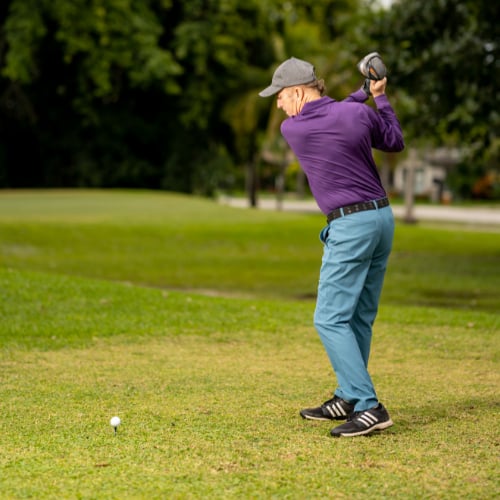
Even small gains in smash factor efficiency can make a significant difference in total yards. For example, increasing smash factor with the driver from 1.4 to the maximized limit of 1.5 can add over 10 yards of carry distance with the same clubhead speed. For a tour professional swinging 125 mph, that modest 0.1 smash factor gain produces 285 feet of carry rather than 275 feet.
There are two main ways to turn higher smash factor into more yards. First, optimizing strike quality and centering contact on the sweet spot of the clubface is vital. Mishits reduce ball speed and distance due to energy and velocity lost away from the center of the face. Proper swing mechanics and path are key. Secondly, being professionally fit for launch conditions and club specifications to match your swing dynamics enables you to fully capture the benefits of an improved smash factor.
How to Improve Your Smash Factor?
There are two main areas of focus to improve personal smash factor – optimizing the efficiency of your golf swing mechanics and selecting properly fit equipment that allows you to make the most of your ability.
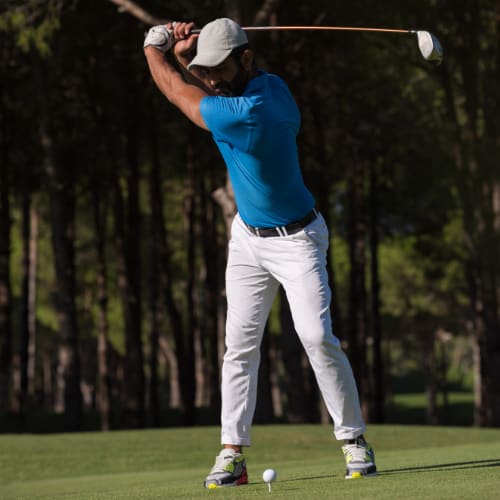
Swing Changes to Increase Smash Factor
Making adjustments to your swing technique and delivery can produce better impact dynamics and energy transfer:
- Work on consistently centering strike on the sweet spot of the clubface. Contact away from center reduces ball speed and smash factor due to gear effect and losing velocity.
- Practice correct attack angles appropriate for driver vs iron shots. Steeper angles for taller long game clubs optimize compressing the ball.
- Increase clubhead speed through strength training and swing refinement to input more starting velocity that can transfer efficiently into the ball at impact.
Equipment Factors in Smash Factor
Being fit for equipment specifications customized to your swing is vital:
- Get properly fit for flex across the set to match transition force and tempo for maximum clubhead speed into impact.
- Consider clubhead design, materials, and groove patterns to match your desired launch conditions and spin rates. Clubfitters can advise ideal options.
- Match club specifications like lofts, lies and lengths to your exact swing metrics through advanced clubfitting.
With a combination of swing adjustments and properly fit golf clubs, you can achieve consistently higher smash factors and increased driving distances. An optimized smash factor flow from an efficient, synchronized swing and equipment relationship. Skilled coaching, training and clubfitting help unlock this motor skill conversion of swing speed to ball speed.
How to Measure and Track Smash Factor?
Unlike basic launch monitor data and shot statistics, smash factor needs to be measured using advanced sensor technology and high-speed video capture. Consumer devices do not display this efficiency metric.

Here are guidelines around smash factor measurement:
- Use professional launch monitors like TrackMan, FlightScope, Foresight Sports, and others found at premium clubfitters and elite coaching facilities. Understanding how launch monitors and golf simulators operate will help you better comprehend their capabilities and advantages. They have extensive sensor arrays to capture micro-measurements.
- Carefully analyze the centeredness of impact on the clubface and the resulting ball speed produced. In addition to simply reporting the smash factor ratio, these systems visually show the exact contact location and corresponding efficiency.
- Look for trends in smash factor over multiple shots as you start making intentional changes to your swing or equipment. The longitudinal impacts over weeks and months are more revealing than any single data point.
Without access to professional launch monitors, golfers can focus on common sense fundamentals – consistent, centered strikes that generate maximum ball speed and distance will inherently maximize smash factor as well. However, for detailed and precise smash factor measurement to truly optimize impact dynamics and equipment customization, this advanced sensor technology is required.
Frequently Asked Questions
In this section of the article, we will provide answers to the most frequently asked questions about smash factor to help you learn everything there is to know about this important metric.
What is an ideal smash factor?
Think of smash factor as a report card on your clubface-to-ball energy transfer. A perfect score, a 1.50, means your ball speed is 50% faster than your clubhead speed. Drivers typically aim for the high 1.4s, while irons settle in the 1.2s to 1.3s. But remember, context matters! A 1.35 smash factor with consistent strikes might trump a 1.40 plagued by mishits.
Does smash factor vary between clubs?
Absolutely! Drivers, with their larger sweet spots, have higher potential smash factors than irons. As lofts increase, achievable smash factors decrease. Your 7-iron won’t match your driver’s numbers, but a consistent 1.30 is nothing to scoff at.
Can I improve smash factor through lessons?
The answer is yes! A qualified pro can analyze your swing and recommend tweaks to optimize face contact. Focusing on a centered strike, shaft flex, and attack angle can unlock hidden smash factor potential.
How often should I monitor smash factor?
Regular check-ins are key, but don’t become obsessed. Occasional launch monitor sessions at the range or during lessons provide valuable data. Track progress over time, not every swing.
Is smash factor only about speed?
While speed is king, it’s not the sole ruler. Consistent, centered strikes are crucial. Mishits, even with high clubhead speed, waste energy and sabotage smash factor. Accuracy breeds distance, so prioritize both.
Can you achieve optimal smash factor with improper technique?
Picture squeezing maximum juice from an orange with a broken juicer. It’s possible, but inefficient and messy. A swing built on solid mechanics is the foundation for optimal smash factor. Lessons and practice, not brute force, unlock true power.
Final Thoughts
Recognizing the pivotal role of smash factor in elevating your golf performance is essential for any serious player looking to enhance their game. Maximizing your smash factor is the key to unlocking the true power behind your swings. Refining your swing technique and considering the correlation between equipment factors and smash factor are fundamental steps. Achieving an optimal smash factor is a holistic endeavor, encompassing both skill refinement and equipment precision.
We hope this article managed to equip you with all the necessary information to understand and optimize smash factor. If you still have any questions or comments, please contact us.
Thanks for reading!

